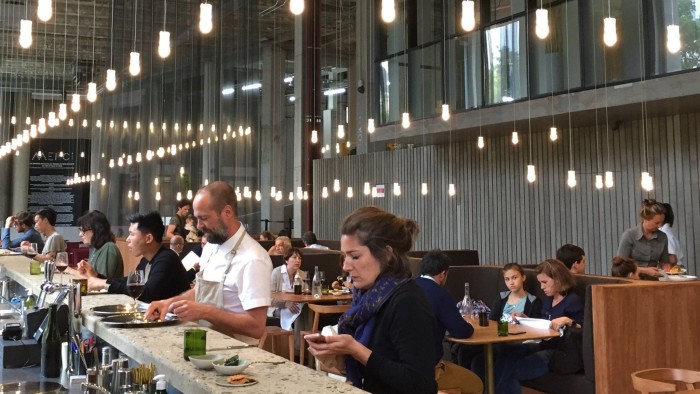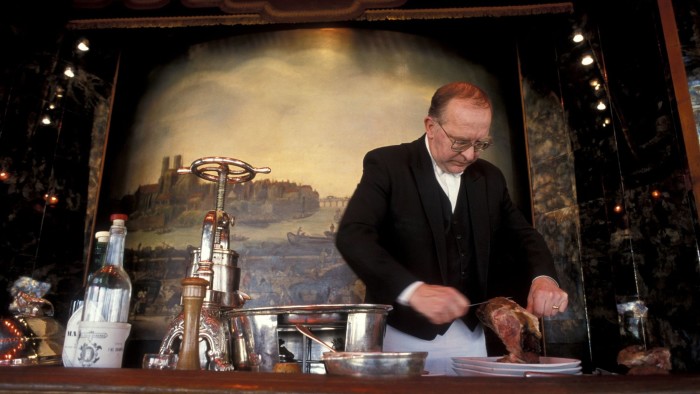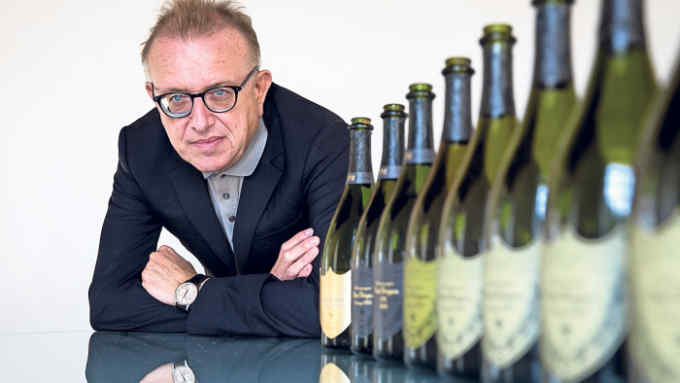Has Paris lost its taste for champagne?

Roula Khalaf, Editor of the FT, selects her favourite stories in this weekly newsletter.
My Parisian girlfriend recoiled at the €26 price of the champagne I suggested for her mother’s birthday party. We stood in a cluttered wine shop in the half-deserted town of Pithiviers, south of the capital. “I need to buy a whole case,” she griped. “Isn’t there any good champagne for under €20?”
This drew an awkward chuckle from the store’s grey-haired owner. Good, cheap champagne is paradoxical, like bargain caviar or a humane war.
The fact is, the price of champagne is shocking to French consumers, even as the inimitable sparkler retains its central place in the national psyche. According to a 2016 poll by the General Syndicate of Winegrowers in Champagne (SGV), eight of 10 French people profess to enjoying champagne — more than say they enjoy wine overall. France remains the world’s largest consumer of champagne, accounting for about half the region’s production.
But champagne sales in France have nonetheless been in gentle decline since 2011. The Comité Champagne, in its 2016 sales bulletin, specifically cited the 2015 Paris terror attacks and the subsequent drop in tourism as a cause for a decline in sales of champagne in France overall that year.
Even as demand continues to grow for high-end, vintage-dated “prestige cuvée” champagnes in luxury markets in the US and the United Arab Emirates, French consumers are showing interest in low-cost alternatives. Sales of prosecco in France grew by 82 per cent in 2016, with an average retail bottle price of €6.29, compared to €20 for champagne.
Demographics seem to be against champagne too. The average age of a champagne consumer in France is 47, according to the SGV, a figure that contrasts inauspiciously with the nation’s persistent youth unemployment, presently hovering above 20 per cent.
All this suggests a disconnect between France’s champagne dreams and the reality of life in an economy without much fizz.

In Paris, France’s age-old love affair with champagne goes unrequited for all but the wealthy. Michelin-starred Paris dining institutions like La Tour d’Argent and Le Meurice offer extensive selections of champagne. But restaurants like these cater principally to tourists and older clientele, as do the more or less predatory champagne bars found in tourist centres like Montmartre, the Marais and the Latin Quarter.
At Paris’ more workaday bistros and wine bars, champagne has been reduced to mostly symbolic value: just one or two entry-level selections from the major houses. If one half of a typical Parisian couple dining out says, “I’ll start with a glass of champagne,” his or her partner invariably responds, “What are we celebrating?”
The city’s more ambitious new restaurants are adapting to a polarised market for champagne. Les Grands Verres, at contemporary art gallery the Palais de Tokyo in the affluent 16ème arrondissement, offers a broad range of organic champagnes from Champagne André Beaufort. At Brutos, a popular new Brazilian steakhouse in the heavily residential 11ème arrondissement, the cutting-edge wine list features no champagne whatsoever.
In Paris and beyond, budget-conscious French drinkers turn to less expensive sparklers from other regions, like crémant wines from the Loire, Alsace or the Jura. Of particular significance is the fast-growing wine category known as pétillant naturel.
Pétillants naturels, or pét-nats for short, are bottle-fermented sparkling wines produced without the addition of outside sugars, which in the champagne method are used to boost secondary fermentation. Often pét-nats are bottled without adding sulphur or using filtration methods.
The results rarely have champagne’s characteristic finesse or high-acid zing. But pét-nats — like those by artisanal Loire winemakers Les Capriades or natural winemaker Patrick Bouju in the Auvergne — are admired for their purity of fruit and for their comparatively low cost, which makes them appealingly low-pressure (in more than one sense of the phrase).
In a curious development, at least one champagne family is getting into champagne alternatives. The other evening at 11ème arrondissement wine bar Aux Deux Amis, I was struck by the precision and beauty of a 2015 sparkling white pinot noir, one made with the champagne method but classed as simple vin mousseux.
I soon learned that it was produced with grapes from the Languedoc by Beaufort Frères, family scions of the Champagne André Beaufort house. At Super, the winebar’s new greengrocer concept next door, the wine cost just €15 retail.
There were no cult pét-nats or Languedoc vins mousseux available for me and my girlfriend that day in June in out-of-the-way Pithiviers. The proprietor of the wine shop suggested a sparkling chardonnay from the Jura region.
But my girlfriend and her mother, true to their heritage, were hell-bent on offering guests champagne — and, for now at least, they were willing to pay for it.

Comments